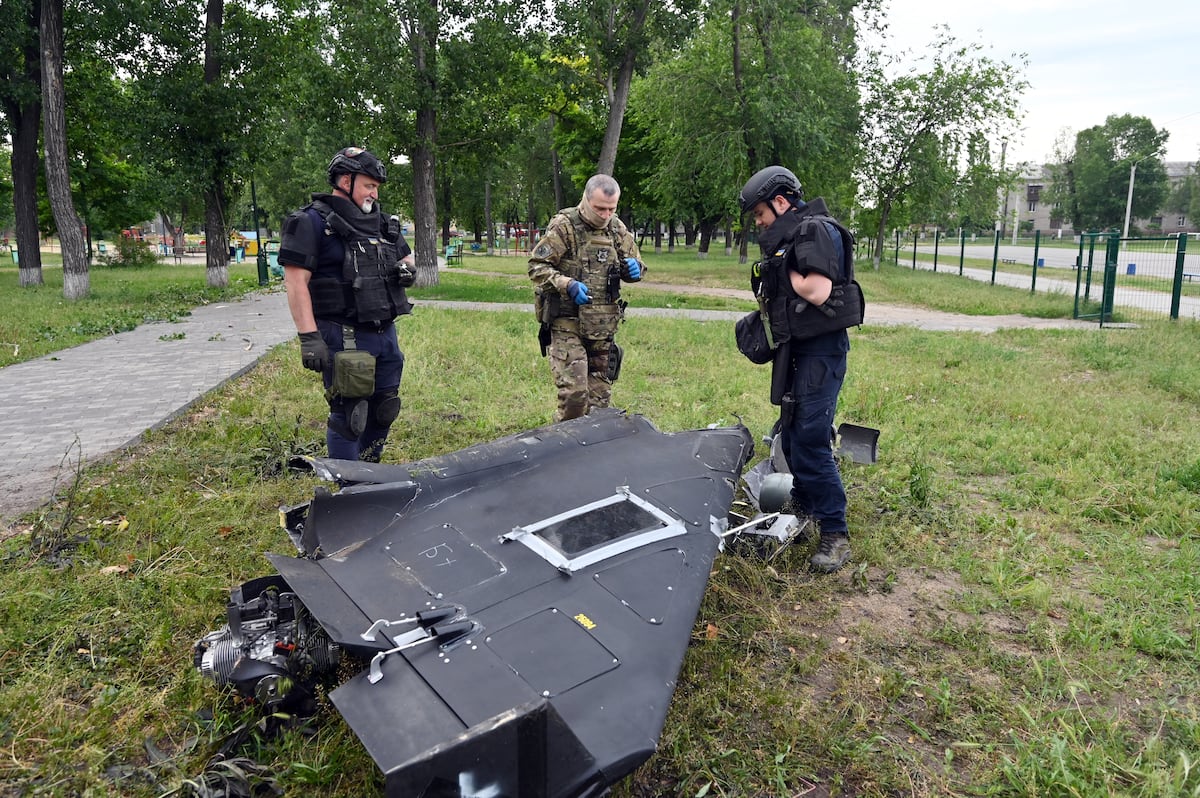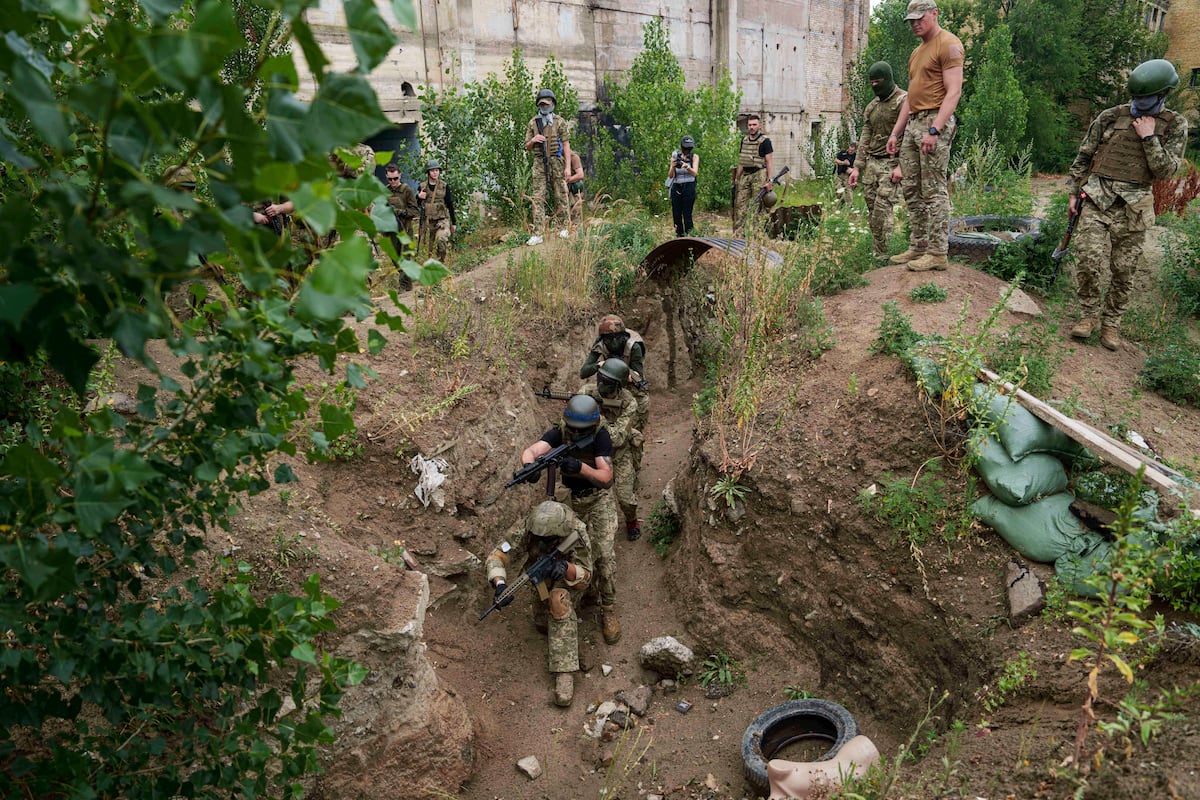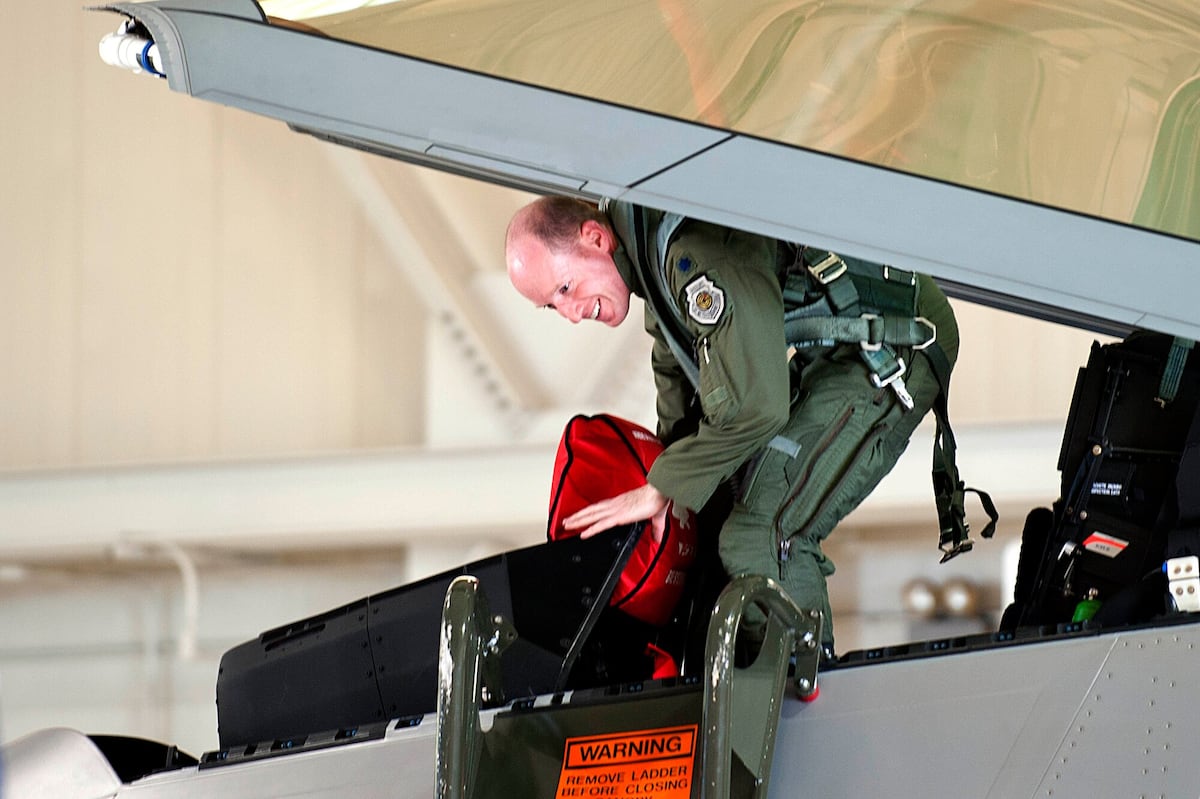MILAN — The expansion of Russia’s production of Shahed-type drones is likely to keep growing, with an objective of being able to deploy 2,000 drones in a single strike, according to the assessment of a senior German military official.
In an interview published last week by the Bundeswehr, Germany’s armed forces, the head of the Ministry of Defense’s Planning and Command Office, Maj. Gen. Christian Freuding, discussed Moscow’s scaled-up production capacity.
“The Russians are looking to increase their production capacity – they want to expand drone attacks … The ambition is to have 2,000 drones that can be used simultaneously,” the official said, having just returned from a trip to Ukraine.
Freuding highlighted that the quality and quantity of Russian-produced Shahed drones have improved, with the interval between air strikes decreasing from every 10-12 days last year to now occurring every three to four days, and deploying up to 7,800 drones at peak times.
“The quality of the drones that were copied from the Iranian predecessor models has improved significantly – we assume that the potency has increased by 50%, they are hardened against electronic warfare defenses and harder to defend against,” he said.
According to the U.S.-based Institute for the Study of War, Moscow’s target of deploying up to 2,000 unmanned aerial vehicles in a single night could be reached as early as November, if the country’s current growing trend in drone usage persists.
The research group noted that as of last month, the Ukrainian Main Military Intelligence Directorate, known as GUR, reported that Russian industry could manufacture approximately 170 Shahed-type drones per day.
This week, Russian media channels shared footage reportedly showing a factory where the Geran-2, the Russian designation of Shahed-136 drones, are mass-produced and tested.
Some of the recent tactics Russian forces appear to have adopted to overwhelm Ukrainian air defenses consist of flying in more drone swarm formations or operating at higher altitude bands, thus making the systems harder to reach.
Freuding argued that more cost-effective countermeasures are needed by Ukraine to fend off the increased drone attacks, noting that mobile fire units, once highly visible in many parts of the country, “are no longer as effective with their machine guns” against Russian-operated drones at elevated altitudes.
“A Shahed drone costs anything between 30,000-50,000 euros to manufacture depending on the model – it makes sense we’re not fighting them with Patriot missiles, which cost over 5 million … but we need countermeasures [ranging] from two, three to four thousand euros [worth] precisely because Russia is looking to increase their production capacity,” the official said.
Freuding made a name for himself since Russia’s attack on Ukraine in February 2022 as a shrewd land tactics explainer to German and European Internet audiences. He is in line to become the next chief of staff of the Germany Army in September.
Earlier this month, U.S. President Donald Trump signaled that he would be ready to send additional Patriot air defense missiles to Ukraine following Vladimir Putin’s resistance to his attempts at negotiating a ceasefire between Russia and Ukraine.
Elisabeth Gosselin-Malo is a Europe correspondent for Defense News. She covers a wide range of topics related to military procurement and international security, and specializes in reporting on the aviation sector. She is based in Milan, Italy.
Read the full article here








Leave a Reply